Columbus, OH Pollen and Allergy Report for Summer 2023
Pollen Allergy Trends in Columbus, OH
When is pollen lowest in Columbus, OH?

February
Lowest month total PPM
Avg. PPM
When is pollen highest in Columbus, OH?

April
Highest month total PPM
Avg. PPM
How does pollen in Columbus, OH compare to Ohio?
Columbus has a lower average PPM than the state of Ohio.
Columbus yearly avg PPM:
Ohio yearly avg PPM:
How does pollen in Columbus, OH compare to the USA?
Columbus has a lower average PPM than the USA.
Columbus yearly avg PPM:
USA yearly avg PPM:
Is pollen worse this year in Columbus, OH?
Spring 2023 was worse than spring 2022.
Spring 2023 PPM:
Spring 2022 PPM:
Average PPM in Columbus, OH
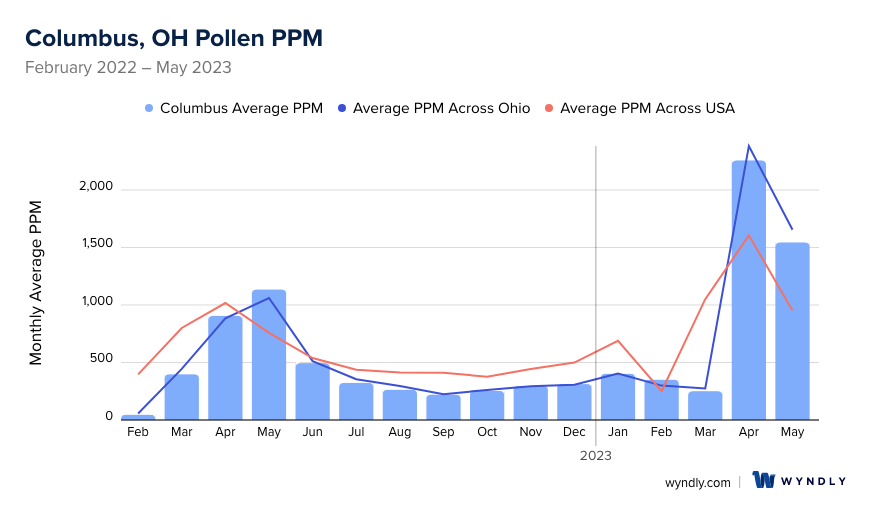
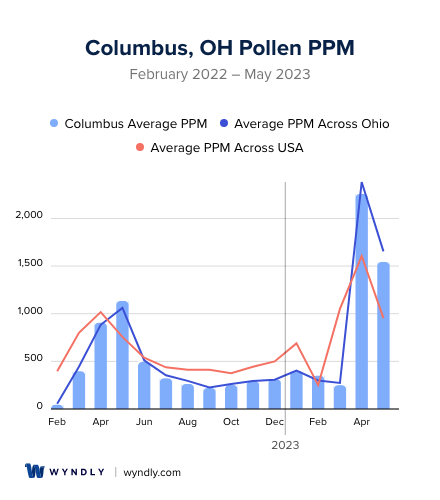
Columbus, OH Pollen and Allergy Breakdown by Month
Grass
When is grass pollen highest in Columbus, OH?
April has the highest grass pollen in Columbus, OH with an average PPM of
When is grass pollen lowest in Columbus, OH?
October has the lowest grass pollen in Columbus, OH with an average PPM of
Tree
When is tree pollen highest in Columbus, OH?
April has the highest tree pollen in Columbus, OH with an average PPM of
When is tree pollen lowest in Columbus, OH?
February has the lowest tree pollen in Columbus, OH with an average PPM of
Weed
When is weed pollen highest in Columbus, OH?
April has the highest weed pollen in Columbus, OH with an average PPM of
When is weed pollen lowest in Columbus, OH?
February has the lowest weed pollen in Columbus, OH with an average PPM of
Columbus, OH Pollen Monthly Breakdown by Pollen Type
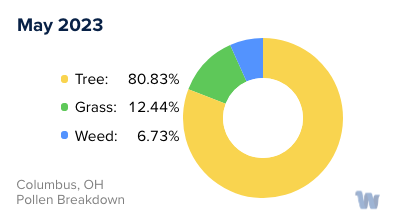
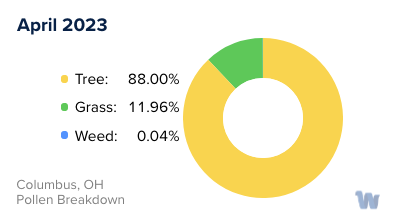
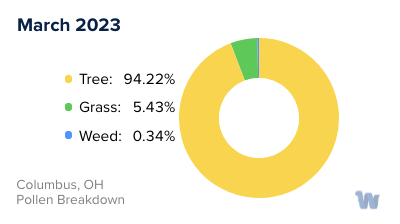
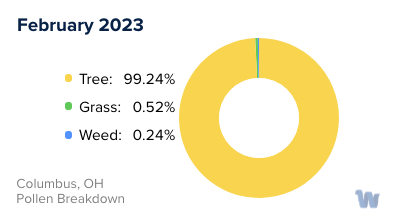
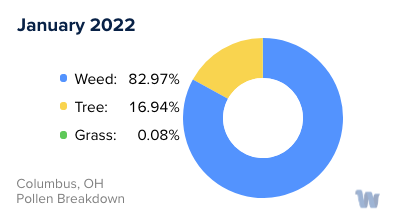
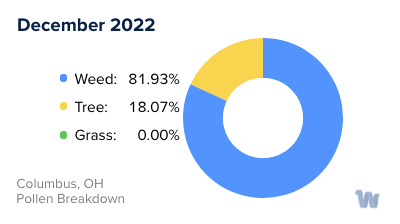
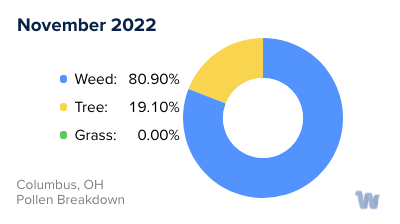
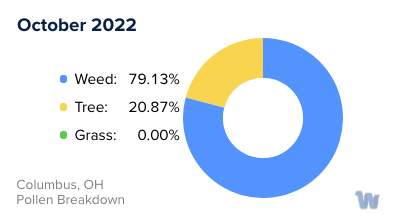
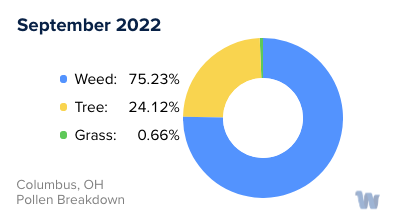
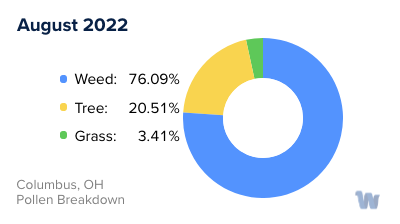
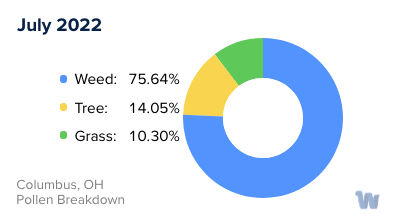
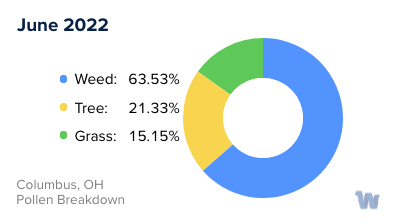
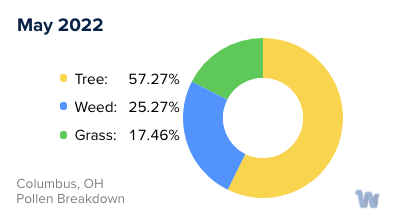
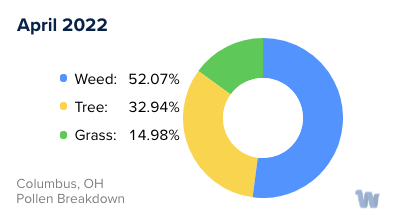
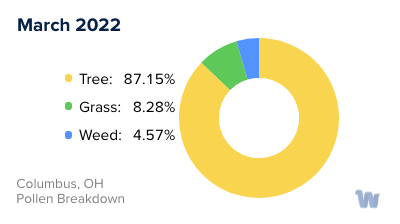
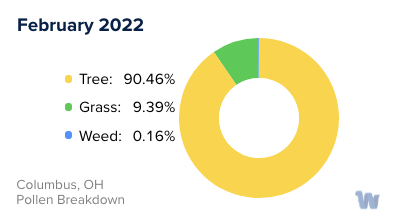
Pollen and Hay Fever in Columbus, OH
Living in Columbus, Ohio, offers a delightful array of seasonal landscapes, but with it comes the lesser-appreciated consequence of pollen allergies. Also known as hay fever, pollen allergies are the body's overactive response to tiny grains released into the air by trees, grasses, and weeds.
In Columbus, the allergy season kicks off in early spring and lasts until late fall, presenting a trio of pollen culprits. The first wave, typically beginning in March and lasting till June, is tree pollen season. Trees such as oak, cedar, pine, and maple are among the major producers of pollen, casting a nearly invisible cloud over the city, causing sniffling, sneezing, and watery eyes in those with allergies.
Following the tree pollen season, grass pollen takes center stage from May to July. Timothy, Kentucky bluegrass, and ryegrass are prevalent in Columbus, releasing pollen that stirs up similar allergic reactions. The high humidity and rainfall in the summer months can intensify the dispersal of grass pollen, leading to higher pollen counts.
The final player in the pollen season is weed pollen, predominantly from ragweed. This typically begins in late summer and extends through to the first hard frost in fall. Ragweed pollen can travel hundreds of miles on the wind, ensuring that even if it's not growing in your backyard, it can still cause symptoms.
Despite the continuous cycle of pollen in Columbus, it's important to remember that pollen allergies are not a sign of a weak immune system but rather an overzealous one. The immune system identifies the harmless pollen as a threat, triggering a chain of reactions that result in allergy symptoms.
In summary, the changing seasons in Columbus, Ohio, bring a changing roster of pollens. Each season has its own set of challenges for allergy sufferers, with tree, grass, and weed pollens taking turns to fill the air. Understanding the types of pollen and their seasons can help residents anticipate and prepare for the pollen season, making it a little bit easier to live with these common allergies.

